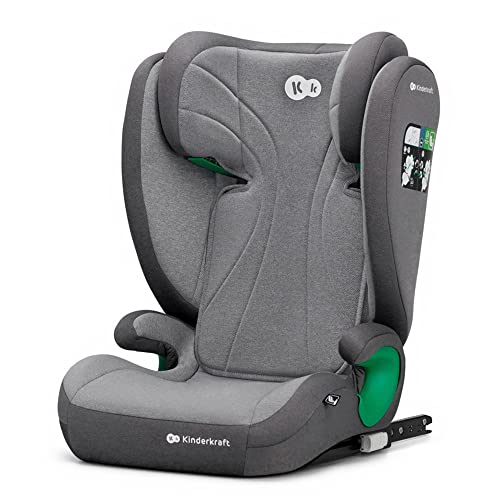A The Complete Guide To Pram Vs Pushchair From Beginning To End

본문
Pram vs. Pushchair: Understanding the Key Differences
When it comes to transferring infants and kids, moms and dads typically find themselves overwhelmed by the numerous alternatives available. Among these alternatives, top prams and pushchairs are 2 of the most typical kinds of baby transport. While the terms are typically used interchangeably, each has unique functions and advantages that cater to diverse parenting requirements. In this short article, we will explore the essential differences between prams and pushchairs, helping moms and dads make notified decisions about which is best fit for their family.
What is a Pram?
A pram, or perambulator, is a type of baby carriage created primarily for newborns and infants. Prams generally feature a totally flat lying position, which is vital for newborns who require to lie flat for spine advancement. A lot of prams come equipped with a deep, enclosed body that offers a relaxing and secure environment for the baby, often with additional functions such as hoods or covers to shield them from the components.
Key Characteristics of Prams:
- Flat Lying Position: Supports healthy back development in newborns.
- Confined Design: Protects the baby from wind and sunshine.
- Traditional Aesthetic: Often made from materials like wicker or fabric, providing a timeless appearance.
- Weight and Bulkiness: Generally heavier and bulkier than twin pushchairs.
What is a Pushchair?
A pushchair, also understood as a stroller or buggy, is designed for older babies and young children who can sit up unassisted. Pushchairs permit for several seating positions, including reclining alternatives for naptime. They are usually lighter and more agile than prams, enabling parents to browse busy areas with ease. Numerous pushchairs include adjustable handles, storage compartments, and can often be folded for convenient transportation.
Key Characteristics of Pushchairs:
- Seating Position: Designed for kids who can sit up, with different reclining positions.
- Light-weight and Compact: Easier to maneuver and transportation.
- Flexibility: Many models are convertibles or can accommodate safety seat.
- Storage Features: Often consist of baskets for carrying diaper bags, toys, and so on.
Secret Differences Between Prams and Pushchairs
Below is a comparative table highlighting the important distinctions between prams double and pushchairs.
| Function | Pram | Pushchair |
|---|---|---|
| Target Age | Newborns to 6 months (flat position needed) | 6 months to young child age (sitting unassisted) |
| Design | Confined, traditional design | Open, contemporary design |
| Weight | Much heavier, bulkier | Lighter, more compact |
| Seating Options | Flat just | Multiple positions consisting of reclining |
| Manoeuvrability | Less maneuverable due to weight | Highly maneuverable |
| Storage Space | Restricted | Generous underneath baskets |
Choosing Between a Pram and a Pushchair
Factor to consider Factors:
- Age of the Child: Choose a pram for newborns and a pushchair shops for older infants and young children.
- Intended Use: If you prepare to do a lot of walking or navigating city streets, consider a model that matches your lifestyle.
- Area: Assess the readily available storage in your house or vehicle and how compactly a model can fold.
- Spending plan: Consider the price variety, as prams and pushchairs can differ extensively in cost.
- Features: Look for additional features that might be useful for your day-to-day life, such as cup holders, canopies, or simple folding mechanisms.
Benefits and Disadvantages
Benefits of Prams
- Ideal for Newborns: Encourages healthy spinal column development.
- Comfy Space: Provides a comfortable environment for infants.
Downsides of Prams
- Weight: Heavier and bulkier, making them less practical for everyday usage.
- Limited Use Time: Generally beneficial just for the very first 6 months.
Benefits of Pushchairs
- Versatility: Suitable for longer durations as the kid grows.
- Lightweight Design: Easier to bring and steer.
Disadvantages of Pushchairs
- Not Suitable for Newborns: Requires the child to be able to sit up unassisted.
- Less Protective: Generally more exposed than a Pram Store Near Me.
Regularly Asked Questions (FAQs)
1. Can I utilize a pushchair for a newborn?
Many pushchairs are not developed for newborns; however, lots of models include baby automobile seat adapters. Some pushchairs use a totally reclining seat alternative that may be ideal for infants, however guarantee the maker validates it's safe.
2. Which is much better for travel?
Pushchairs are usually chosen for travel due to their light-weight and compact nature. They can typically be folded easily for transport on public transport and fit more readily in car trunks.
3. For how long can I use a pram?
Prams are generally suitable for babies till they reach around 6 months of age or when they can support themselves in a seated position.
4. Exist hybrid models offered?
Yes, lots of producers produce hybrid models that can be transformed from a pram to a pushchair depending upon the kid's advancement stage.

5. What should I search for when purchasing a pram or pushchair?
When acquiring, think about security functions, ease of use, durability, weight, and storage. It's likewise recommended to test numerous designs for comfort before deciding.
Picking between a pram and a pushchair eventually depends upon the age of your child and your lifestyle choices. Understanding their distinctions assists moms and dads make notified choices that deal with their family's requirements. Moms and dads can delight in the journey of being a parent by making sure that their kid's convenience and safety are always focused on, while likewise considering their own convenience and design.

댓글목록0